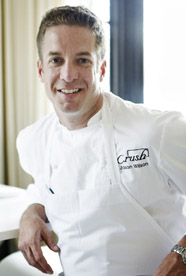 Chef Jason Wilson is a James Beard Award Winner and the owner of Seattle’s Crush restaurant. He is also a devoted SousVide Supreme user.
Chef Jason Wilson is a James Beard Award Winner and the owner of Seattle’s Crush restaurant. He is also a devoted SousVide Supreme user.
After interviewing him a year ago at his restaurant (as seen in this video), we had the pleasure of speaking with him again last week about how he’s using his SousVide Supreme in the restaurant and at home.
You mentioned in your video interview that you had started with a sous vide chicken breast – that your goal was to get a good, moist chicken breast. Had you tried to accomplish any sous vide cooking before you got the SousVide Supreme?
Had I tried sous vide cooking before the SousVide Supreme? Yeah, I used immersion circulators up until 2009 or 2010, when the Supreme came out. Until it came out, I used immersion circulators, the kind of things that attached to a pot or a plastic container and circulated the water, and heated the water.
Was SousVide Supreme the first actual water oven that you had tried?
It was the first one I tried, yeah, and it’s the only water oven that I’ve tried using. It’s the only thing that I use now, essentially.
How did the immersion circulator, and then the SousVide Supreme change the menu? Obviously, it allowed you to do other things, but did it allow you to expand your menu?
I think that sous vide cooking in general has allowed me to do a lot of things with the menu. I think, at least, the menu offerings that I have are far more consistent in quality. I have a more consistent product to stand behind. And it basically elongates the life of many of the products as well. Vegetables, fruits, meats, and so forth, because I’m able to cook them in a compound way – cook them once and then refresh them again in the bag. And the other thing, really, is it increases the level of flavor, and overall intensity of flavors as well, with cooking sous vide.
With the SousVide Supreme in my restaurant, I use it quite a bit in the line. And, because it doesn’t circulate, because it heats the water rather than circulating the water, I’m able to do a couple other things with it too, that I’ve found. I’m able to poach proteins or vegetables in a butter bath in a SousVide Supreme. So, I’ll fill it up with butter. And, I’ll do the same thing with sauce – I’ll actually poach in the SousVide Supreme at a regulated temperature. And, the SousVide Supreme never breaks the butter, never breaks the bath, never breaks the stock or sauce. So, to me, that’s kind of superior sometimes to a circulator.

Herb Roasted Pheasant Breast
What dishes have been most successful for you to prepare, and which dishes have proven the most popular? And did you notice a shift, in terms of popularity?
I think that it’s tough to pinpoint what is most successful, because sous vide cooking now is about 90% of my menu. By that, I mean many of the ingredients are cooked that way, whether it’s a radish, or cucumber, asparagus, it’s all done that way, and then we refresh it in a secondary cooking process. So I think, the success is cooking things like chicken or rabbit, things that typically dry out – pork tenderloins and chops. These things get dry very easily. Also, things that take a long time to cook. So, pork belly, short ribs, flank steak or shanks, these things take 2, 3, 4, 6 hours to cook. With sous vide cooking, these things take a longer time, however, we don’t need to baby them like we do traditional braises. And, they yield a much more intense flavor. And cooking sous vide makes it much more tender. It’s much more refined of a plate when doing it this way, as opposed to when doing it traditionally, in the oven.
Are there any recipes that you previously attempted, but have been able to fully realize because of the SousVide Supreme?
Definitely, the poaching is something that I had never thought of with circulators. The SousVide Supreme really allows me the versatility in the line cooking. With circulators, we use a bath. It’s sometimes precarious when you have a small line. The SousVide Supreme allows me to cook sous vide at every station of my line, because it’s compact, because it’s reliable, and because it’s so easy to transport. With a circulator, you’re looking at a much larger investment, both financially and finding the containers to keep them in, and all the upkeep and cleaning you have to do.
Have you had much experience with cooking game meat in the SousVide Supreme?
Oh yeah. Some people think of duck as game meat, obviously, and I swear by it with duck, because the fat on a traditional duck breast, whether it’s a mallard or a drake duck breast, usually it’s an obstacle, an people will usually render the fat down to get it crisp. In a sous vide bath, it becomes crisper faster, and then the flavor is much more rich. I’ve cooked squab in it. The liver flavor is greatly reduced after a period of 35 to 40 minutes in the cooking bath. I think it’s just fantastic. I do squab confit with it. I do all of my lamb in it now – shanks, loins, chops, t-bone steaks. Whatever it is I’m cooking with lamb, it always gets it, because the flavor is far superior, and it intensifies the lamb without over-intensifying the gaminess that some people get out of it. So what it is, it cooks slowly and denatures the blood, basically, and makes it taste more appealing. Elk and venison, I’ve done the same thing. We get a lot of game up here in the Seattle area. I’ve got a girl, actually, that’s going to kill some elk for us – she’s going to be shipping elk to us tomorrow [Tuesday] that she killed on Sunday. We’ll do that sous vide as well, and we’ll do that with elderberries and a little bit of espresso. And those flavors are just – they’re the most refined, but also they’re the strongest, and it allows for a very pure flavor to come through with cooking game. I think it’s far superior. Game is traditionally very lean, elk and venison are very lean meats. So, as far as being able to keep it juicy and keep it flavorful, as is always the goal, sous vide is the way to do it.
Do you use sous vide at home now? Have you started doing that?
[laughs] Yeah, I do. I’m only laughing because I often cook sous vide at home. I work a considerable amount, and my wife works a considerable amount. So, in our little time, we’ll spend Sundays sealing pork or lamb or steaks or chicken, so that in the week our son will have it with us for dinner. We often cook sous vide at home. It can be far simpler than traditional cooking. It’s remarkable. And if you can plan your menus out, it’s actually far more cost-effective than traditional cooking, with far less waste, and you can utilize the waste in far greater ways. And, it freezes perfectly as well, so you can cook all of your meals at once. It’s just, everything about it is fantastic.
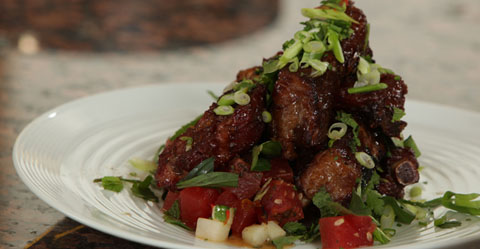
Thai Glazed Pork Ribs
Do you do a lot of meal planning at home?
At home, I tend to plan very simple menus: menus that are achievable, that I can leave instructions for my wife or nanny, or sometimes my five year old son. I’ll say, “Here, put this in and make sure the numbers say 1-4-5. And they use it, it’s great. Another thing, with entertaining too, when we have people over, I’d much rather take a lamb loin or three steaks, fire the grill up, and then put them in the SousVide Supreme for an hour and a half, then come back – you know, have some wine with friends, throw the steaks on the grill, and then we’re done.
You’ve trained your son to use the dials?
Oh yeah. He likes it. He thinks it’s pretty cool. Actually, for Thanksgiving, I don’t care for turkey so much, so we did duck and lamb last year for Thanksgiving, and he helped to cook it. He put them in the bath, and he programmed it, put the timer on, all that stuff. He was four then. It was fun. Those kind of things are fun.
Would you recommend the SousVide Supreme to your friends?
I do.
Would you recommend it to your competitors?
I do. I have.
Chef Wilson has also shared several of his favorite sous vide recipes with us. For a taste of Crush in your kitchen, try one of these recipes:
Thai Glazed Pork Ribs
Sous Vide Garden Vegetable Salad
Sous Vide Short Ribs
Sous Vide Pork Belly
Herb Roasted Pheasant Breast
Tuscan Rib Eye Steak
Saffron Scented Sous Vide Halibut
More information and news about Jason Wilson and his restaurant Crush can be found at his website ChefJasonWilson.com. He can be found on Twitter at @ChefJasonWilson.
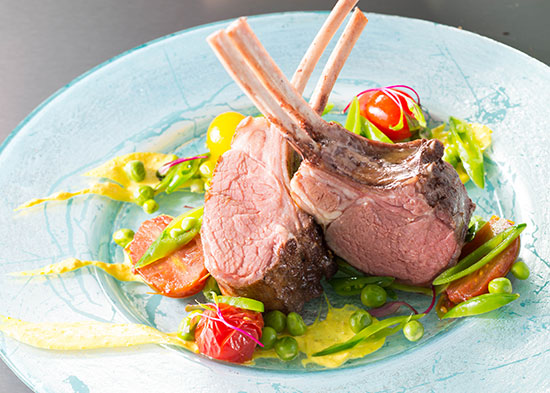

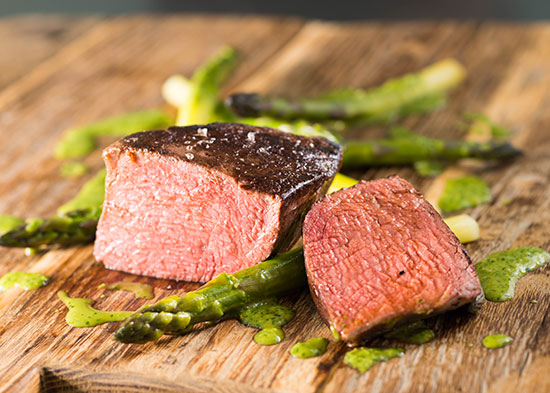
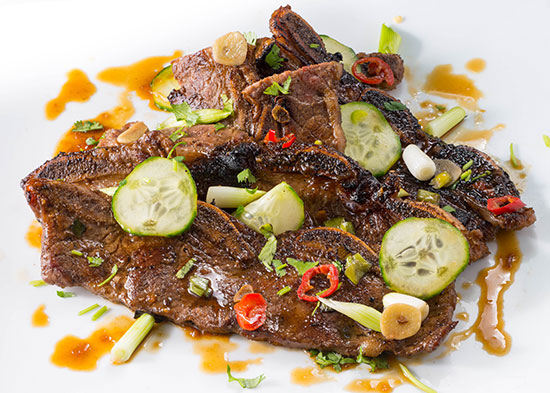

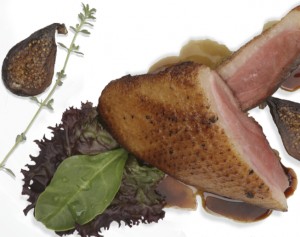
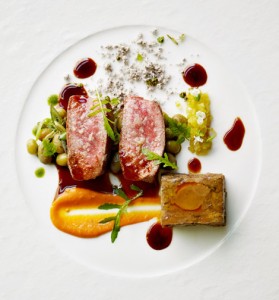



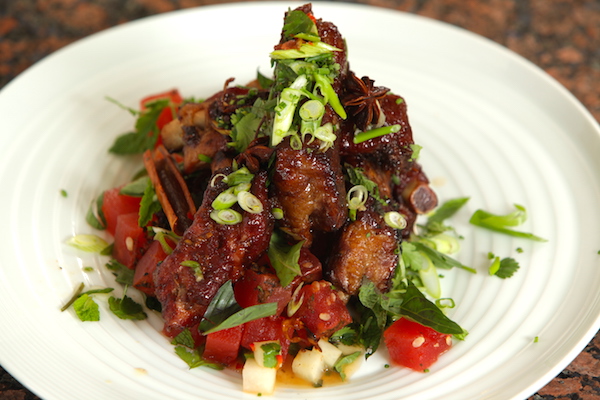
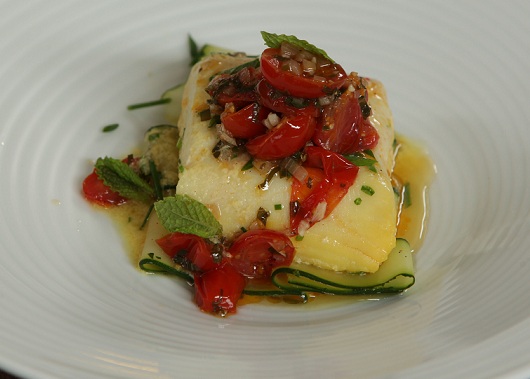
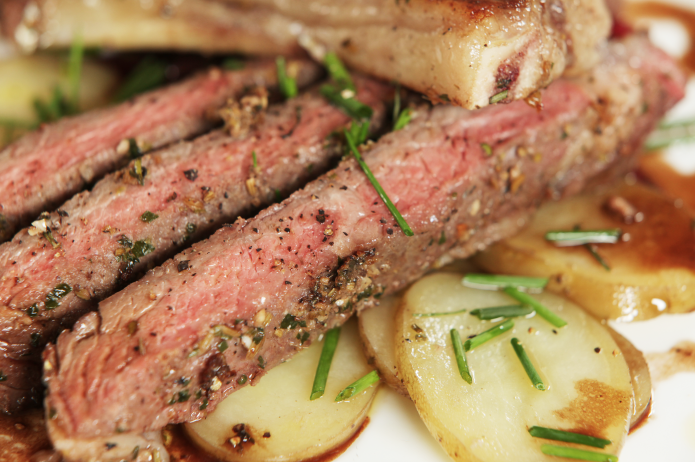
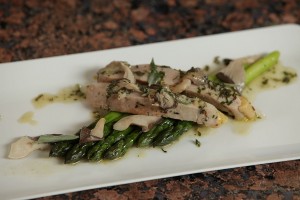
 Easy Returns & Exchanges
Easy Returns & Exchanges Shipping Rates & Info
Shipping Rates & Info Satisfaction Guarantee
Satisfaction Guarantee Contact Us
Contact Us Email your questions to
Email your questions to 
